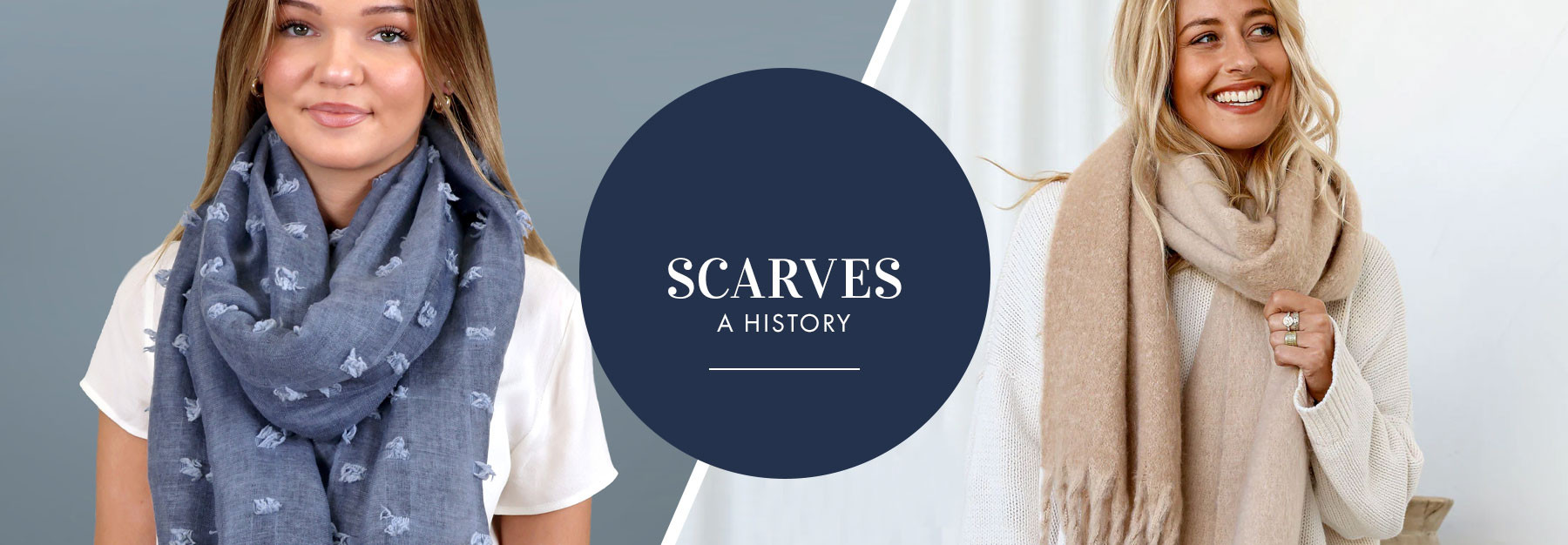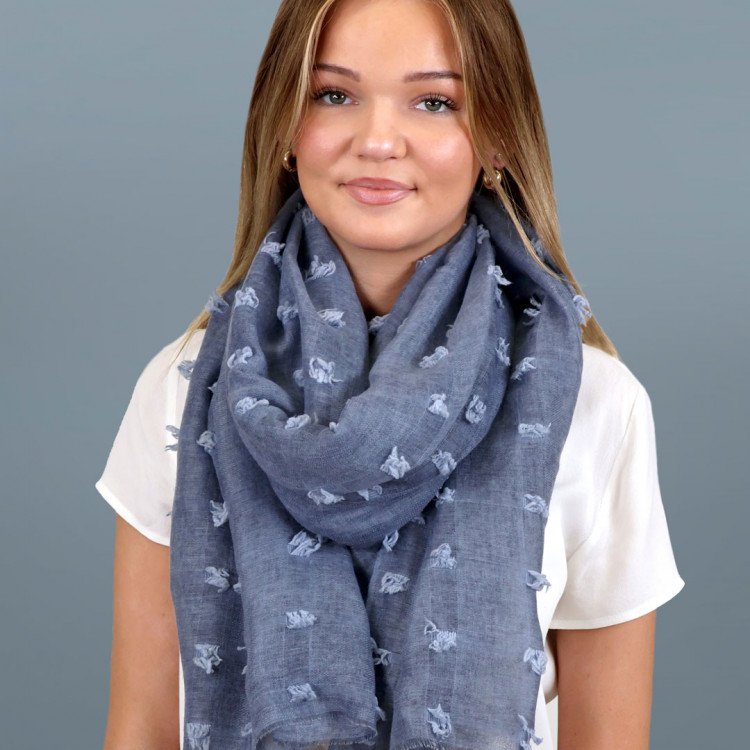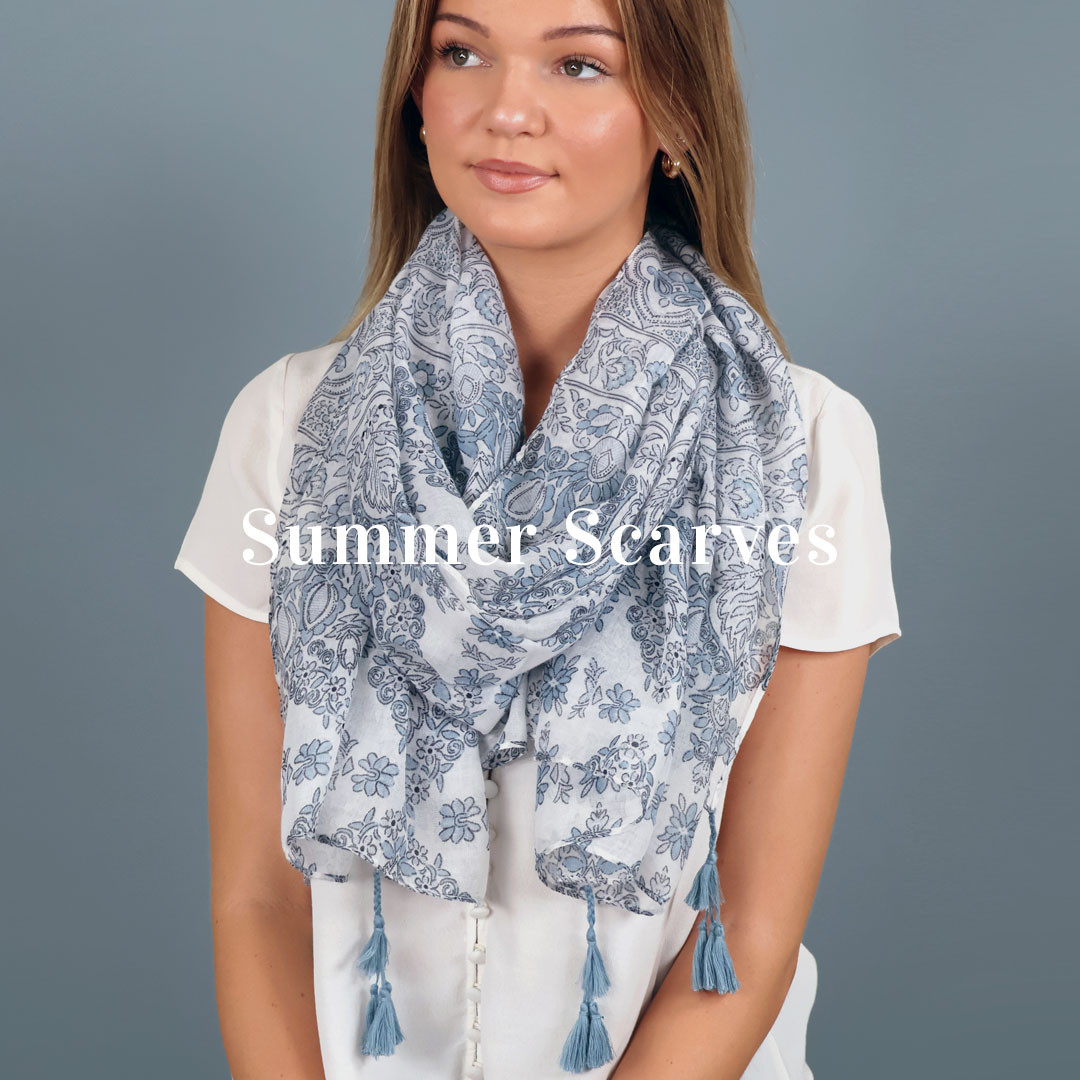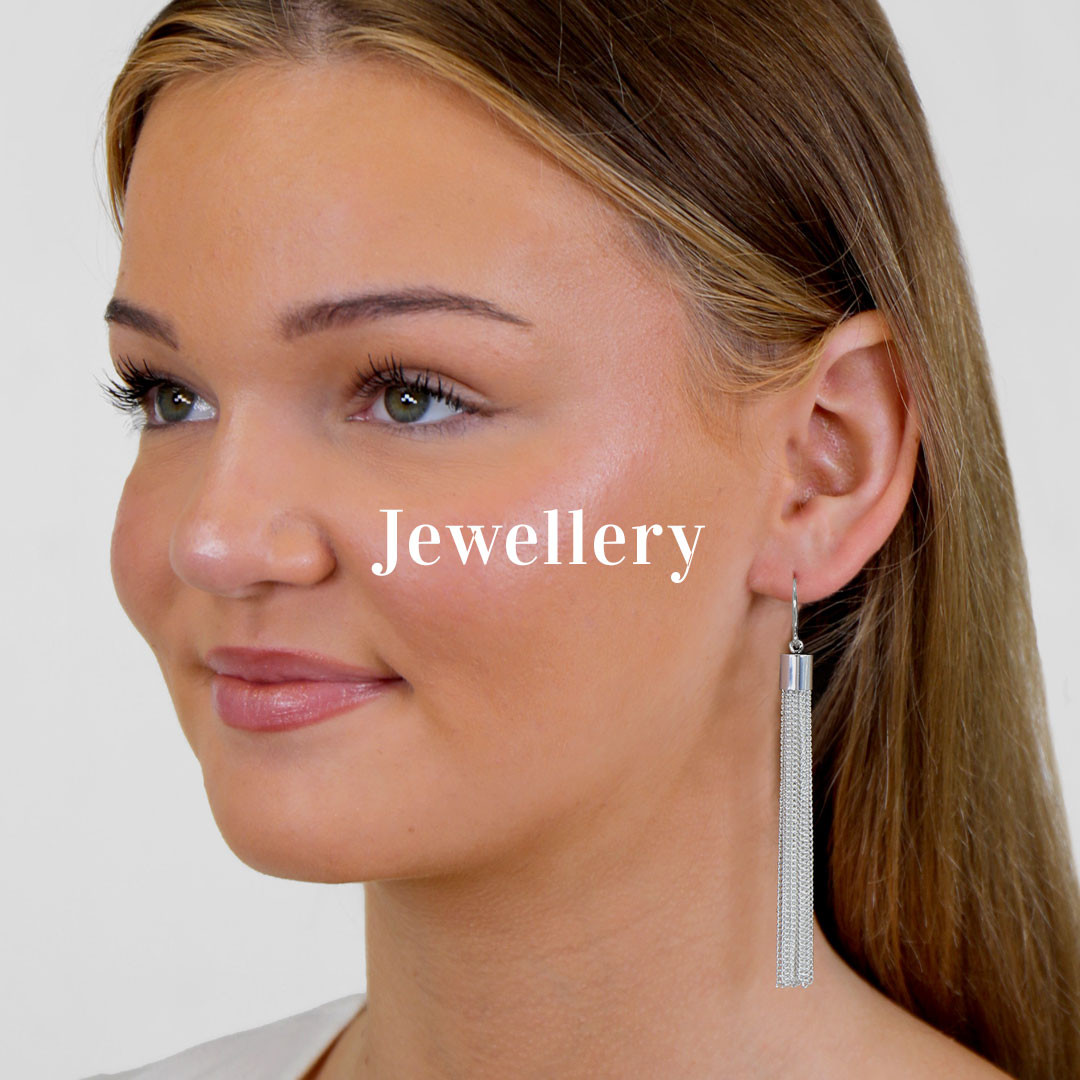Tracing the Threads: The Rich History of Scarves
Scarves have been a part of human attire for centuries, weaving through the fabric of our cultural heritage and fashion history. From their early days as simple pieces of cloth to their current status as stylish accessories, scarves have undergone a fascinating journey. Their uses and styles have evolved, reflecting changes in society and fashion trends. In ancient times, scarves were often seen as practical items, providing warmth and protection. As societies developed, so did the ways people wore scarves, transforming them into symbols of status and beauty. Different cultures have embraced scarves in unique ways, incorporating them into traditional garments and rituals. Throughout history, the art of styling scarves has continued to evolve.
What started as a practical necessity has turned into a significant fashion statement.
Scarves now come in a wide range of fabrics, colours, and designs, each with its own story to tell. In this article, we will trace the threads of scarves styling through the ages. We'll explore their historical evolution and cultural significance, delving into how these versatile accessories have shaped and been shaped by the fashion world. Join us on this journey to uncover the rich history and enduring appeal of scarves.
Scarves Styling - An Overview
Scarves have always been more than just simple pieces of fabric. Their journey from practical use to high fashion is a story rich with history and cultural symbolism. Understanding the historical evolution of scarves gives us a deeper appreciation for their place in fashion today. Initially, scarves were used for practical reasons like warmth and protection. Ancient Romans, for example, used scarves called "sudariums" to wipe sweat from their faces. Over time, these practical items took on more symbolic meanings. They started to represent status and identity in various cultures.
During the Renaissance, scarves became more elaborate and decorative. Nobles and royals adorned themselves with luxurious fabrics, turning scarves into fashion statements. This period marked the beginning of scarves being seen as both functional and fashionable. By the 20th century, scarves had firmly established themselves in fashion history. Designers began to experiment with different materials, patterns, and styles, making scarves a versatile accessory. From the elegant silk scarves of the 1920s to the bold patterns of the 1960s, each decade brought new ways of styling scarves.
Today, scarves continue to evolve, reflecting current fashion trends while maintaining their rich cultural heritage. They are worn in countless ways, from simple neck wraps to intricate head coverings. The endless possibilities for styling scarves make them an essential part of modern wardrobes. The journey of scarves through history shows how they have transformed from practical garments to powerful symbols of fashion and identity.
Their evolution continues as they adapt to the ever-changing world of style.
Ancient Beginnings of Scarves
Scarves have been around for thousands of years, serving both practical and decorative purposes. In ancient times, they were often used for protection against the elements. The Egyptians, for instance, wore linen scarves to keep cool in the hot desert sun. These early scarves were simple but essential accessories. In China, scarves were used as a symbol of rank. Military officers wore scarves to signify their position and status. This practice highlighted the early use of scarves as symbols of identity and authority. Similarly, in ancient Rome, scarves known as "sudariums" were used to wipe away sweat and keep clean, showing a blend of practicality and personal care. These ancient accessories varied widely in material and style. While the Chinese favoured silk for its luxurious feel and durability, other cultures used wool, linen, and cotton. The choice of fabric often depended on the climate and the resources available. These early scarves set the stage for the diverse styles and uses we see today.
Scarves in Medieval and Renaissance Europe
During the Medieval and Renaissance periods, scarves evolved significantly. They became more than just practical items, taking on new roles in fashion and social status. In medieval Europe, scarves were often used by knights. They wore scarves, or "chivalry scarves," given to them by ladies as tokens of favour and protection in battle. This practice added a romantic and symbolic dimension to the accessory. As the Renaissance brought about a focus on art and beauty, scarves became more decorative. Nobility and royalty started wearing them as fashion scarves, made from luxurious fabrics like silk and velvet. These scarves were often richly embroidered and adorned with jewels, showcasing wealth and elegance. The intricate designs and high-quality materials made them highly coveted items.
Fashion during the Renaissance also saw scarves used in various creative ways. Women draped them over their shoulders or around their necks, while men tied them around their hats or waists. This period marked a significant shift in scarf styling, with a greater emphasis on aesthetics and personal expression. The use of scarves in Medieval and Renaissance Europe illustrates how this simple accessory could convey complex messages of love, honour, and wealth.
The rich history of scarves during these times shows their evolution from practical garments to essential elements of fashion and personal identity.
Cultural Heritage of Scarves in Asia
Scarves hold a deep cultural significance in many Asian countries, where they are woven into the fabric of daily life and traditions. In India, scarves, often referred to as dupattas or shawls, are integral to traditional clothing. These ancient accessories come in vibrant colours and intricate designs, adding a touch of elegance to any outfit. They are used not only for styling but also to signify cultural heritage and social status. In Japan, scarves have a rich history as well. Traditional Japanese scarves, like the furoshiki, are multifunctional pieces of cloth used for wrapping and carrying items. This practice reflects a respect for resources and a unique approach to both fashion and utility. The art of folding and tying these scarves is passed down through generations, showcasing their importance in daily life and rituals. China, renowned for its silk production, has a long history with scarves. Silk scarves, once reserved for royalty, symbolise wealth and sophistication. Over time, they became more accessible, spreading their appeal across various social classes.
The intricate patterns and luxurious feel of silk scarves make them prized possessions, reflecting both tradition and fashion.
In Southeast Asia, scarves are often used in traditional dance and ceremonies. For example, in Cambodia and Thailand, the krama is a versatile scarf used for everything from protection against the sun to ceremonial purposes. Its checkered pattern is instantly recognisable and holds significant cultural value. The diverse ways scarves are used in Asia highlight their importance beyond mere fashion. They are deeply rooted in cultural traditions and everyday practices, illustrating a rich tapestry of history and meaning. From the practical to the ceremonial, these scarves are much more than accessories; they are a vital part of cultural identity.
The Historical Evolution of Scarves in the Middle East
In the Middle East, scarves have a profound cultural and historical significance. These ancient accessories often serve as symbols of modesty and faith. The hijab, for example, is a traditional headscarf worn by many Muslim women. It represents both religious devotion and cultural identity, making it an integral part of daily life. Middle Eastern scarves are known for their intricate designs and rich fabrics. Silk, wool, and cotton are commonly used, each chosen for its suitability to the region's climate and cultural preferences. The keffiyeh, a traditional Middle Eastern scarf, is typically made of cotton and features a distinctive checkered pattern. It is worn by men and serves both practical and symbolic purposes. The art of scarf styling in the Middle East is deeply rooted in tradition.
Different regions have unique ways of tying and wearing scarves, reflecting local customs and historical influences.
These practices are passed down through generations, preserving the cultural heritage of scarf wearing. Beyond their practical uses, Middle Eastern scarves often carry significant cultural symbolism. They can signify social status, tribal affiliation, or political beliefs. For instance, the keffiyeh has become a symbol of Palestinian nationalism, illustrating how a simple accessory can convey powerful messages.
The Role of Scarves in African and Indigenous Cultures
Scarves play a vital role in many African and Indigenous cultures, where they are woven into the fabric of daily life and traditions. In West Africa, scarves, often referred to as headwraps or gele, are essential fashion accessories. Women use these scarves to create elaborate headpieces, showcasing their creativity and cultural pride. The styles and patterns can indicate social status, marital status, or even the wearer's mood. In Indigenous cultures, scarves often hold ceremonial significance. Native American tribes, for example, use scarves in traditional dances and rituals. These scarves are decorated with vibrant colours and intricate designs, each symbolising different aspects of their cultural heritage. The act of wearing and presenting scarves in these ceremonies is a way to honour their ancestors and preserve their traditions. African scarves are known for their bold patterns and bright colours. They are made from various materials, including cotton and silk, each selected for its durability and comfort.
The process of creating these scarves often involves traditional techniques passed down through generations, ensuring that each piece carries a piece of history.
Indigenous scarves, similarly, are crafted with great care and attention to detail. The patterns and colours used often have deep meanings, representing everything from nature to spiritual beliefs. These scarves are not just accessories; they are expressions of identity and cultural heritage. The role of scarves in African and Indigenous cultures highlights their importance beyond mere fashion. They are symbols of identity, pride, and tradition, illustrating a deep connection to cultural roots. Through their use, these communities continue to celebrate and preserve their rich histories.
Styling Scarves Through the 20th Century
The 20th century witnessed significant changes in how scarves were styled and perceived in fashion. In the early 1900s, scarves were primarily used as practical accessories, providing warmth and comfort. However, as the decades progressed, scarves began to take on a more prominent role in fashion. During the 1920s, silk scarves became synonymous with elegance and sophistication. Women draped them loosely around their necks or tied them in chic knots, adding a touch of glamour to their outfits. This period marked the beginning of scarves being used as true fashion statements.
The 1950s saw a revival of vintage styles, with scarves being tied in bows or used as headbands. These looks were popularised by Hollywood stars, influencing everyday fashion. The versatility of scarves allowed them to be incorporated into various styles, from casual to formal. In the 1960s and 70s, bold patterns and bright colours dominated scarf trends. Psychedelic prints and floral designs reflected the vibrant and rebellious spirit of the times. Scarves were worn in multiple ways, including as belts, turbans, and even tops, showcasing their versatility and the creativity of fashion during these decades.
By the end of the 20th century, scarves had solidified their place in fashion.
Designers continued to experiment with materials, patterns, and styles, ensuring that scarves remained a timeless accessory.
Scarves in Modern Fashion
Today, scarves are more popular and diverse than ever. They are not only practical but also a key element of contemporary fashion. Designers continue to innovate, creating scarves in a wide range of materials, from luxurious cashmere to eco-friendly fabrics. One of the current trends in scarf styling is the use of oversized scarves. These large, cosy accessories can be draped in various ways to create different looks, adding a modern twist to traditional styling. They provide warmth and style, making them perfect for winter fashion.
Another trend is the incorporation of scarves into casual and streetwear. Lightweight scarves in bold prints or neutral tones can elevate a simple outfit, adding a touch of sophistication. The use of scarves as headwraps, belts, or bag accessories continues to be popular, reflecting their versatility. Incorporating global traditions into modern designs is also a significant trend. Many contemporary scarves draw inspiration from ancient accessories and cultural symbolism, blending traditional elements with modern aesthetics. This fusion creates unique and meaningful pieces that resonate with a wide audience. The rise of sustainable fashion has led to an increased demand for eco-friendly scarves. Consumers are more conscious of the environmental impact of their purchases, leading designers to create scarves from recycled materials or sustainable fibres. This trend highlights the ongoing evolution of scarves in response to changing societal values. Overall, scarves remain a staple in modern fashion, reflecting both historical influences and contemporary trends.
Their enduring appeal lies in their versatility, beauty, and ability to adapt to any style or occasion.
Scarves have journeyed through history as both practical garments and fashionable accessories. Their evolution reflects the changes in culture, society, and style. From ancient times, where they provided protection and signified status, to the vibrant and rebellious patterns of the 20th century, scarves have always adapted to the needs and tastes of the times. In various cultures, scarves carry deep symbolic meanings. They play significant roles in traditions and daily life, showcasing their versatility and importance. The way scarves are styled has transformed over the years, influenced by global trends and historical contexts.
Today, scarves remain a vital part of fashion. They continue to evolve, blending traditional elements with modern trends. Oversized scarves, bold prints, and sustainable materials are just a few examples of how this accessory adapts to contemporary fashion demands. They can be seen on runways, in casual streetwear, and in wardrobes around the world. By understanding the rich history of scarves, we gain a deeper appreciation for their role in fashion and culture. These accessories are more than just pieces of fabric; they are storytellers, carrying with them the legacies of different eras and traditions.
Whether used for warmth, decoration, or cultural expression, scarves will always be a beloved part of our wardrobes, bridging the past with the present.





